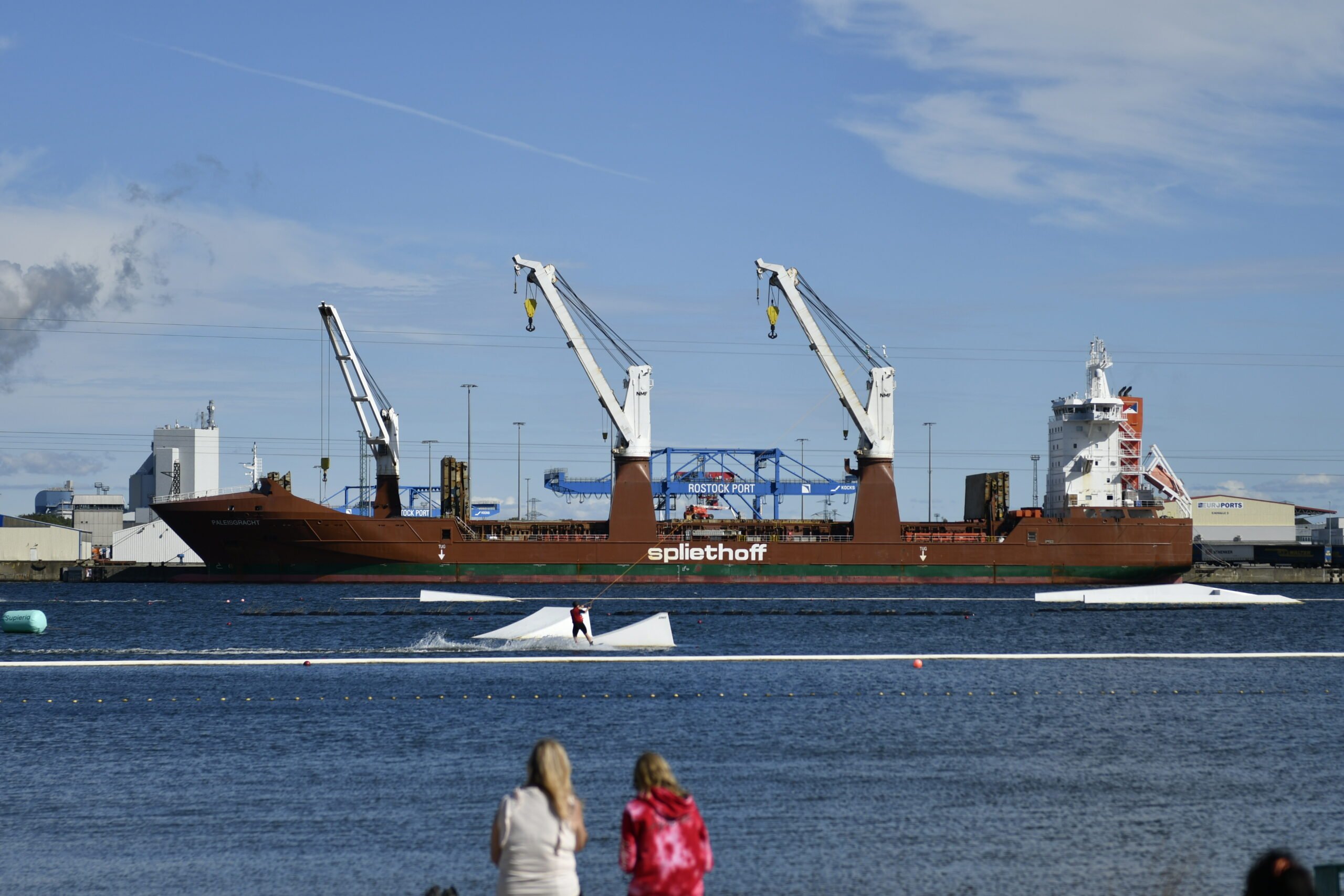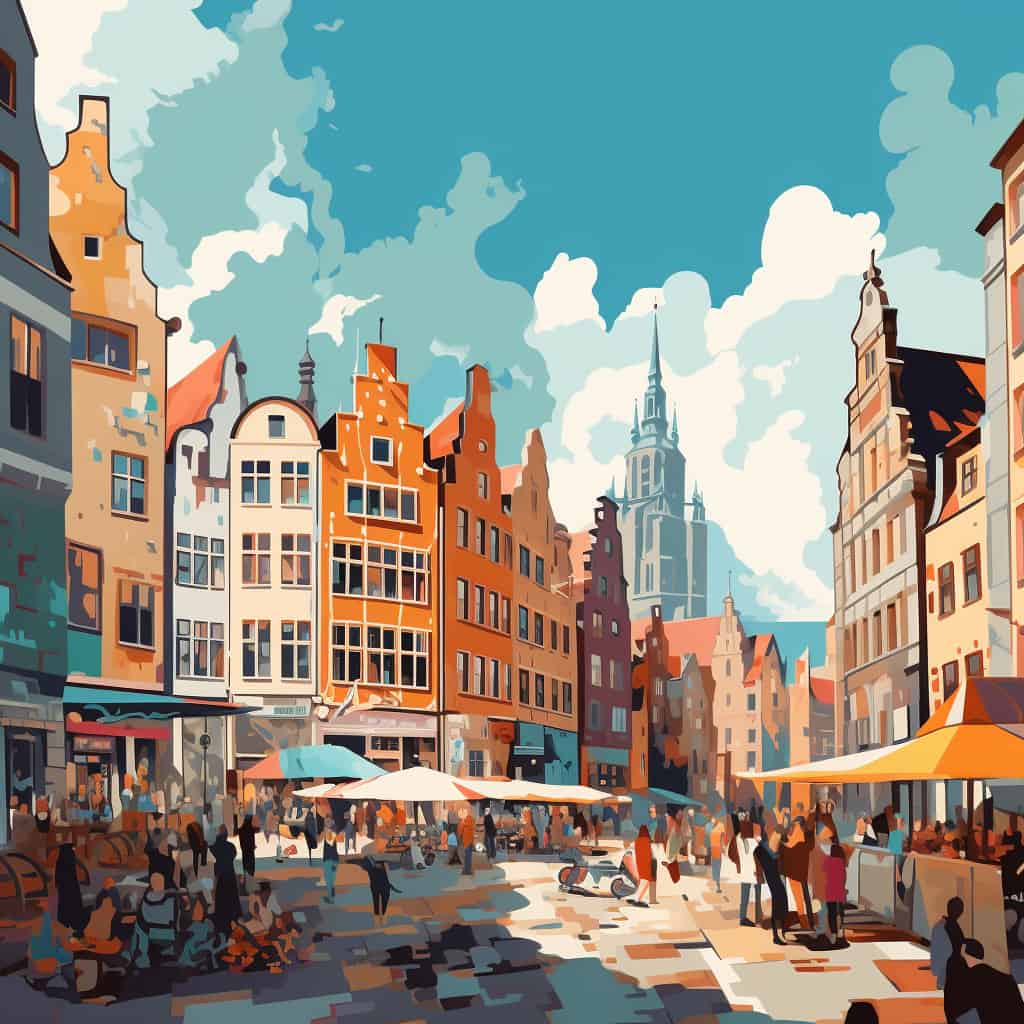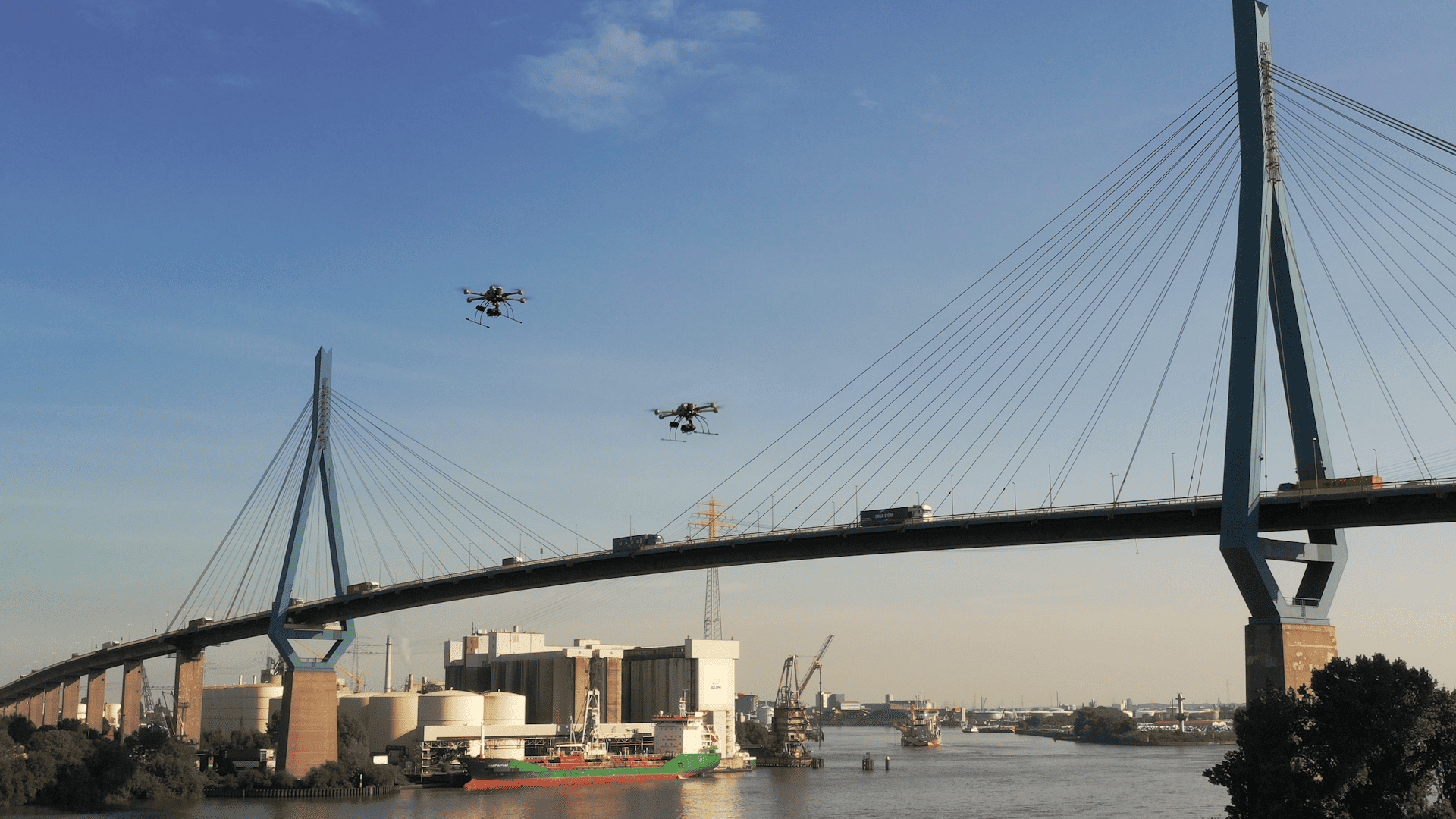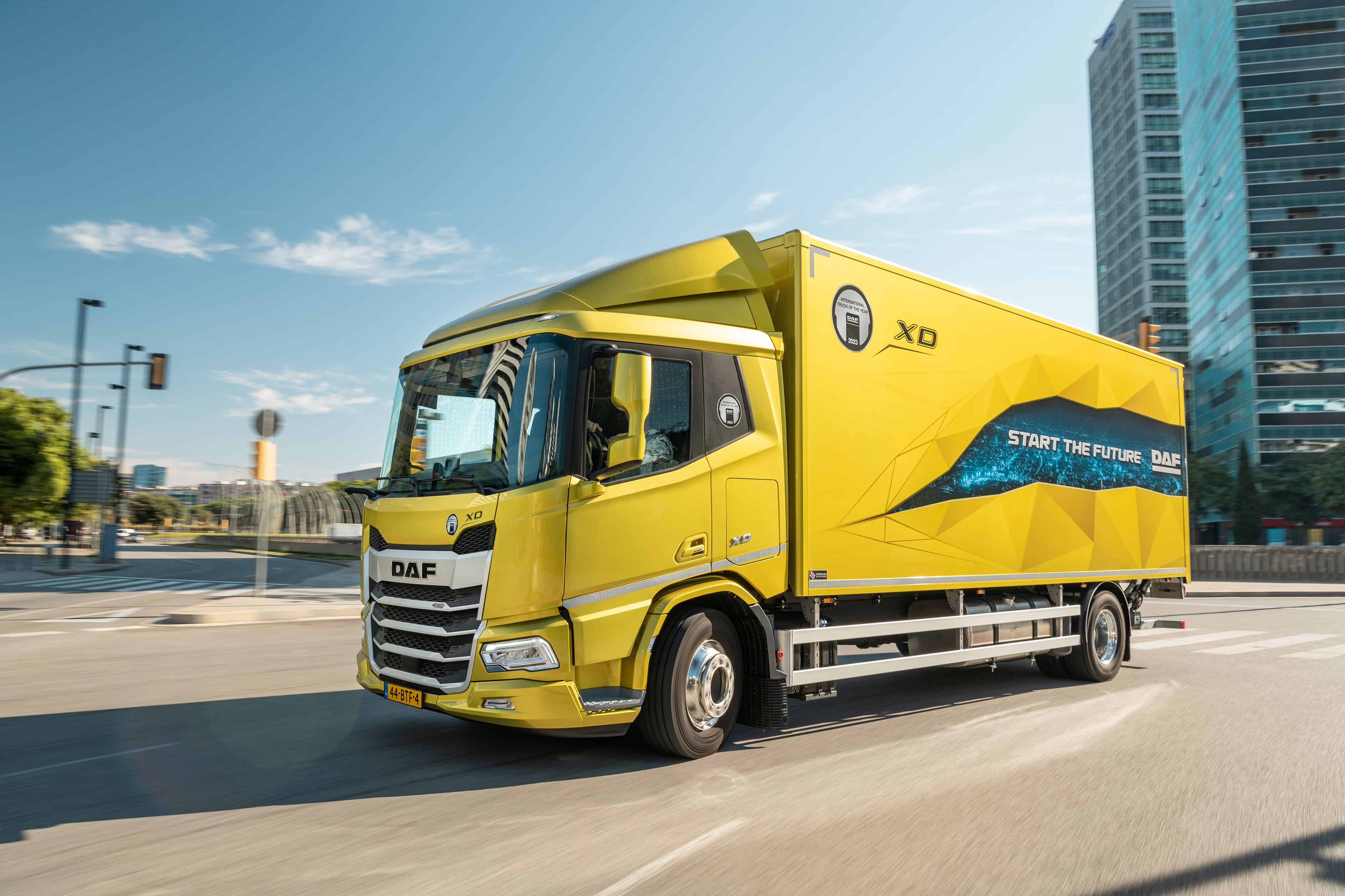
In Germany this summer, you can travel on regional public transport for 9 euros per month. Innovation Origins is seizing this opportunity to visit a number of future-proof projects. In this final edition, we visited the port city of Rostock.
For one last ride with the 9 euro ticket, I chose Rostock, Germany’s fourth seaport in terms of freight handling (after Hamburg, Bremen/Bremerhaven and Wilhelmshaven). It’s no Rotterdam, but it’s not exactly small either.
Rostock Port extends from the old town on the banks of the Warnow River to the seaside resort of Warnemünde, about twenty kilometers to the north. There is not much sign of any large-scale industry for the first few kilometers cycling north from the center. The old part of town is teeming with tourists, while the ‘Stadthafen’ (city harbor) is full of sailing and motor yachts.
Neptun Shipyard
The first sign that Rostock used to be Germany’s main Baltic port during the GDR years is the old Neptun shipyard, which was founded in 1850. By 1989, seven thousand people worked here, but like many shipbuilders who hailed from behind the Iron Curtain, Neptun was no match for the competition. The EU also issued a decree that fewer new ships could be built in an effort to prevent overcapacity.
The shipyard still kept going, just in a much more scaled-down form. It moved to a new location closer to the sea. Nowadays, Neptun mainly builds river cruise boats. The old shipyard has been transformed into a shopping center with a parking garage.

A little further towards the sea, however, signs of economic enterprise really begin to materialize. Across the water, the plume of the local coal-fired power plant can be seen more and more clearly. The same goes for the cranes of the transhipment port. Also looming ahead, we can see the first cruise ships and ferry boats. Rostock is an important ferry port, especially for the crossing to Denmark and Sweden.
We pass by the old fishing port, which is thriving, and a number of research institutes such as the Thünen Institute for Baltic Sea Fisheries – dedicated to sustainable fishing, and the Fraunhofer Institute for Smart Ocean Technologies (SOT). Among other things, Fraunhofer SOT develops underwater robots for inspecting and maintaining offshore wind turbines.
Oceanography
Rostock is in any event known for its research on the oceans of the world. For example, there is the Leibnitz Institute for Baltic Sea Research in Warnemünde, and the Department of Marine Biology at the University of Rostock. Other leading German cities in the field of oceanographic research include Bremen and Kiel.
So, I am slowly drawing closer to the actual reason for my visit. We cycle a bit further to the IGA Park and the shipping museum, from which you have a prime view over the Überseehafen.
The four large piers can be clearly seen next to the cranes and the coal-fired plant. Just out of sight are the massive round tanks for oil and chemical storage. Rostock has an important role to play in the Federal Government’s plans as an oil port, at a time when imports from Russia will cease in 2023 ( on account of the oil boycott).

This mainly concerns oil for the refinery in Schwedt – a few hundred kilometers to the south on the Oder River – where almost all gasoline, diesel and heating oil is produced for eastern Germany and partially also for Poland.
Until recently, the plant ran entirely on oil that came from the Druzhba pipeline, but due to the boycott of Russia, no more oil will flow through there as from 1 January 2023. The hope is that Rostock can replace about three-quarters of Russian oil with imports from the US and other parts of the world.
Hydrogen roundabout
A little further into the future, Rostock is betting heavily on hydrogen. A gigantic hydrogen plant is to be built on the grounds where the coal-fired power station currently stands (the planned closure is in 2030). The first 100 megawatt electrolysis plant with a capacity of 6,500 tonnes of hydrogen per year is scheduled to start operating in 2026.
Over the next decade, this should then be expanded incrementally to more than ten times that amount. The “HyTech Hafen Rostock” (as the project is called) hopes to make a significant contribution this way to making industry more sustainable throughout eastern Germany.
The HyTech port project is one of the more ambitious German hydrogen projects, along with AquaVentus at Helgoland in the North Sea. Companies participating are EnBW, RheinEnergie, RWE and Rostock Port, each with a 25 percent stake. An investment amount of “several hundred million euros” is tentatively assumed, which includes government subsidies.

A lot of people still have doubts about whether the hydrogen economy will ever amount to anything. Plenty of problems still need to be overcome. Above all, costs must come down and energy efficiency needs to go up. But it certainly is exciting.
Subsidy for a luxury hotel
That sustainable enterprise is not always easy is demonstrated by the developments at the last company I want to take a closer look at. For this, I have to cycle all the way around the port. We first cycle to the beach at Warnemünde and then take the ferry across to Hohe Düne.
That is a small village center along a narrow stretch of dune that lies north of the harbor, and is home to some of the most upscale properties in Rostock. Massive houses stand there, some with private access to the beach. For those who may have thought that Rostock is down-and-out, they are sorely mistaken.
There are also some pretty nice boats moored at the Yachthafenresidenz – a hotel with a marina. What is extraordinary about this is that this project was subsidized with 47.5 million euros. It seems that there has also been quite a bit of wheeling and dealing with public funds.

The Norwegian hotel entrepreneur Per Harald Løkkevik was convicted of tax evasion a few years ago and is in court again this year for alleged subsidy fraud. An SPD politician is apparently involved as well. All quite unsavoury. Nevertheless, the dunes are beautiful.
As we reach the end of Hohe Düne, we duck into the forest that skirts the harbor back towards Rostock. Once out of the forest, not much can be seen of the port. The coal-fired power plant is the only thing that towers above the farm landscape.

Approximately halfway towards the city lies an industrial area that houses, among other things, a large logistics center of Amazon and the Nordex wind turbine factory.
There is not much going on at the halls. That is entirely due to the fact that things are not going so well for Nordex. Its wind turbines are not selling particularly well outside Europe at the moment. In addition, the company is struggling with the high cost of energy and raw materials.
Consequently, cuts must be made in its own ranks and the brunt of these cutbacks is the factory in Rostock where rotor blades are manufactured.
A good number of the giant turbine blades are still on the site, ready to be shipped. But production at the last German rotor factory was shut down a few months ago. It is being relocated to India, which is cheaper. This will put about 600 workers out of work. It is not yet known who will take over the production halls. Evidently, globalization has not come to an end yet.
From there, it’s back to Rostock station, one last time sitting in the aisle on a jam-packed train back to Berlin. For 9 euros a month, you occasionally have to endure some hardships. Still, it was a worthwhile experiment: the 9 euro ticket was sold 52 million times. It remains to be seen if there will be a follow-up.








